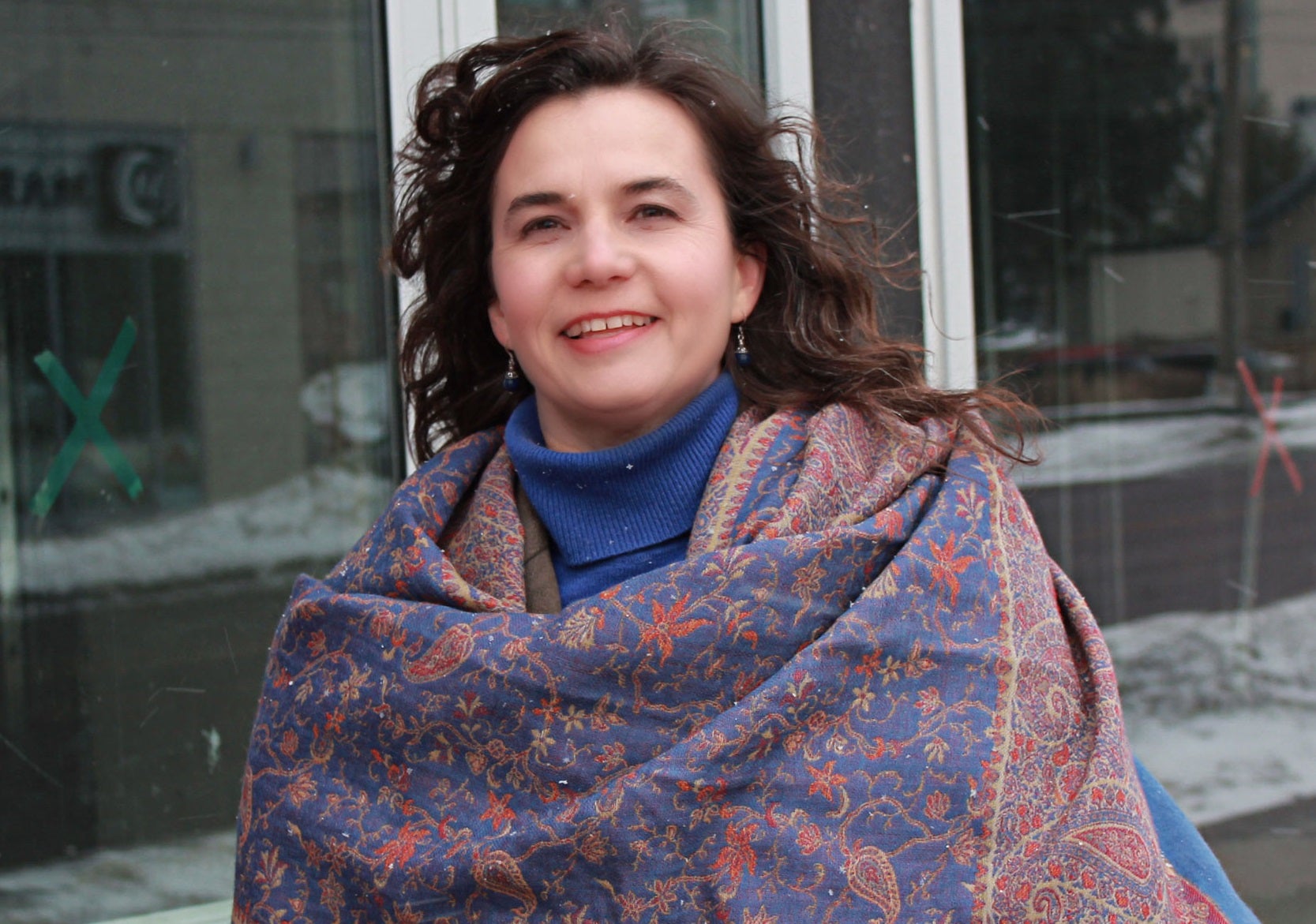Waterloo Region needs high quality TOD development (or Urban Villages) for all—everywhere
Dawn Cassandra Parker, Professor, School of Planning, University of Waterloo; Director, Urban Growth and Change Research
Why won’t our current development trajectory solve our housing crisis?

The housing affordability crisis has hit home. Our municipal governments have recognized the crisis in affordability for low and moderate income residents, and have begun urgent efforts to increase affordable housing supply. However, we are increasing facing a housing crisis for all but the wealthiest. Every month our Kitchener-Waterloo Association of Realtors (KWAR) shares the new chapter in a lengthening narrative of historically low housing supply, sales prices increasing at rates way above inflation, income growth, and population growth, and accelerating bidding wars between local and GTA buyers. My Urban Growth and Change research group documented these dynamics during the 2016-2018 housing price acceleration. Our surveys found that GTA buyers were more often motivated by local affordability and long-term investment potential. They were more likely to buy larger, single-detached homes paying above list prices and more than local buyers. KWAR tells us this same story is repeating, with a new flood of migrating buyers now able to work from home, looking for home offices and safe, private yards. Many local residents have the same wish list. They want space for families and open space access.
Our group has also found that many buyers place a high priority on access to urban amenities—including walkability and bikeablity, access to shopping and entertainment, and access to open space—but purchased homes in suburban areas without these amenities, in order to obtain more living space, a yard, and more garage space. These buyers would have preferred to buy so-called transit-oriented development, but could not afford it. Having moved to the dispersed and segregated suburban landscapes, they find themselves highly reliant on driving.
How has this housing supply crisis come about? Relative even to other Canadian municipalities, Waterloo Region is succeeding at the intensification game. The Region’s Monitoring Metrics project shows a surge in residential building along the LRT corridor, and a wide variety of housing products being built outside the core. In addition to the Ion, Grand River Transit has created an integrated transit network that includes expanded access to express bus routes, and previous to the Ion launch, transit ridership was growing faster than population growth.
But, something important is still missing from this positive development picture. Our residential development is not providing the bundle of attributes that buyer seek and can afford. Buyers want not only space for families and access to green space, they also want access to urban amenities and an urban lifestyle. Our urban landscape could provide these housing opportunities through more and better walkable, bikeable, green mixed-use development both in the LRT corridor and throughout the Region-“Urban Villages”, both in the core and the suburbs. Such “transit-oriented” or “non-automobile oriented” mixed use, intensified neighbourhoods would fill a currently underserved housing market niche, and could ease accelerating pressure on housing markets. In core areas, they would create the opportunity for younger, smaller households to “grow in place” as they evolve into family households. In the suburbs, they would allow “aging in place for downsizers wanting to remain in their neighbourhoods, but not in their homes.

So-called “Missing Middle” housing is a key component of the urban village vision. Like Seattle, Vancouver, Portland, Minneapolis, and Toronto, the “missing middle” is also largely missing from recent Waterloo Region development. Yet we know the demand is here. Our Urban Growth and Change research group has developed a deep understanding of ideal housing demand and actual choices for our varied demographic cohorts. Small households seek 1-2 bedroom units, often focused on “urban lifestyle,” ideally with enough space and flexibility for a home office or a nursery. Downsizers households are looking for more living space and some green space—such as views, park and forest access, privacy, a porch or balcony, and walking access to an urban centre. They tell us existing condo options are too small and too sterile. Families prioritize enough living space (most often missing for family renters), but also access to green amenities. We found renters’ ideal built form to be 3-bedrooms and around 1500 square feet, with a balcony, patio, or small yard, and family buyer’s ideal to be 4-bedroom, 2000 square feet, with a yard and a garage.
Work from others in the School of Planning provides additional perspectives on housing demand. Brian Doucet’s work sheds light on those experiencing housing gentrification, and Markus Moos’ work explores the housing preferences of Millennials.
These wants and must-haves can be provided in “missing middle” low and mid-rise high density housing developments, but will only succeed in fully addressing our housing challenges as part of an “Urban Village” model. Why are these products not being provided? What is being supplied and why? How can we change this trajectory?
Why are urban villages missing in Waterloo Region?
What do our intensified housing products look like now, and what do current buyers see as missing? We have many new high-rise towers in the core areas, but they lack green amenities, and build units that are too small (or have too few bedrooms) for young families and downsizers. Some wonderful stacked town home and apartments are being built in the suburbs, but they are surrounded by surface parking lots, and accessible to retail only by crossing busy streets and more surface parking lots. New developments--even those near LRT stops—that have more than enough area for an “urban village” often have commercial and retail segregated into parking-intensive, non-walkable “power centres”. Alternatively, dense, high-rise tower developments with little to no greenspace creating stressful, alienating environments, as shown by UW researcher Robin Mazumder. While new single-family homes and duplexes are being built, their extreme scarcity leads to high and accelerating prices.
What is missing? “Missing Middle” housing options in walkable, bikeable, mixed-use neighbourhoods. We can envision many types of low-rise, high-density developments such as stacked townhomes with multi-level balconies, and apartments modeled on the iconic urban pre-war building in large cities—with family-sized units, windows on multiple sides, deep private balconies, and landscaped front and rear courtyards. To create urban villages, these forms need to be housed in or near mixed-use developments that are multi-story and low/mid-rise, with narrow walkable/bikeable streets, welcoming and diverse street-level retain, comfortable public spaces, and no surface parking lots. These urban villages can provide the bundle of attributes that family renters and home buyers seek, at lower cost and higher density—density sufficient to make transit a viable alternative to the car. To meet market and equity needs, they must also include high-quality green space and affordable housing options.
Why are these urban villages not being created by our land and housing markets? In complex ways, housing markets work imperfectly towards the public good. First, developers generally model new builds based on what sold previously, and those who did not buy, or bought a second-choice product, are left out of developer’s perceptions of market demand. Developers and financers also look for comparable local developments to estimate the potential profits of a development type. If we have no local urban villages to assess, the product is perceived as risky and uncertain. An entrepreneurial risk taker needs to be the first mover to supply the product.
More fundamentally, urban villages have public good aspects that the market will not naturally provide, such as reduced air pollution from fewer cars and more trees. Housing markets can and do price in these benefits for the buyer. Our recent work shows positive values for cycling infrastructure, open space access, and street trees. (Developers take note—those mature trees will increase your selling price! Don’t cut them down.) But so many others beyond the home owner will share such benefits, and their values are not reflected in sales prices—or in the profits than can be captured by developer. Even mainstream economists acknowledge that public values such as reduced congestion, air pollution, and climate improvement will be underprovided by private markets.
Adding further complexity, our housing markets are increasingly shaped and influenced by the commodity value of housing (see the work of Martine August), especially as institutional investors flee increasingly volatile securities and non-renewable resource markets. Even if a developer strives to provide public goods through their development, those providing housing finance may insist on a perceived profit-maximizing design options. Further, the specialization of real-estate investors may exacerbate segregation of residential and retain development.
The path we are on now can be shifted. We now have a confluence of opportunities to work together to bring high quality intensified development for all to Waterloo Region. Cities and the Region are developing visionary affordable housing strategies. All have identified inventories of municipally held lands that could be transitioned for housing, and they are showing leadership to do so. We have more undeveloped spaces (especially surface parking lots) for such infill construction. Some are in the hands of private developers, who could be challenged to re-envision their projects. Or, municipal governments and non-profits can be the visionary risk-takers, as their mandate prioritizes the public good over private profits.
The pandemic has shed new light on social inequality, vulnerability, and the need for design of healthy and resilient communities for all, including equitable access to open space, retail, and transit. It has also led to a likely permanent shift to working-from-home for many, simultaneous increasing demand for that home office but also for the local coffee shop and pub. Well-resourced local and regional developers are showing leadership and a willingness to partner with municipalities and non-profits to envision and create these new communities. New technologies such as tall timber construction and modular housing may create opportunities to reduce construction costs. And new non-profit and partnership funding models are in development.
What would success look like? If urban villages in the suburbs allowed larger households to have one car instead of two, that is 1 fewer garage and 1 fewer retail parking space—just imagine how much land could then be freed to build more housing, easing housing price acceleration, and bringing numbers to transit that would allow GRT to further increase transit frequency and access. The Region has set ambitious targets for carbon neutrality. Such design will help us get there!
Good urban design and healthy communities should be planned and built for all residents, within communities that can house residents of all income levels. The Urban Village model can support this vision. We have the need, we have the opportunity, and we have the partnerships to work together for the common good. Let’s start now!